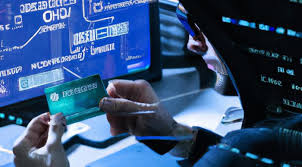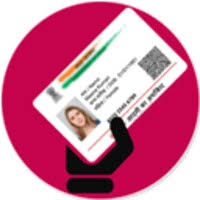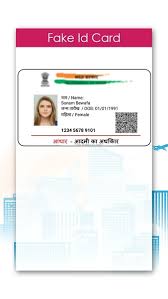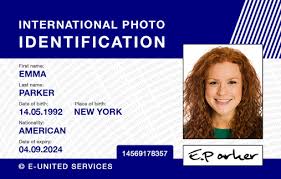How to spot Connecticut fake ID

How to Spot a Connecticut Fake ID: A Comprehensive Guide
In today's world, fake IDs are becoming increasingly sophisticated, making it challenging for authorities and businesses to distinguish genuine from counterfeit. This article will walk you through the key aspects of identifying fake Connecticut IDs, highlighting advanced security features, materials, printing techniques, and the common challenges users may face. We'll also explore the quality assurance behind high-grade materials and solutions for troubleshooting potential issues.
Introduction to Connecticut IDs
Connecticut state IDs are some of the most secure in the U.S., utilizing cutting-edge technology and materials to prevent forgery. However, with advances in counterfeiting, some fake IDs are capable of mimicking these features at a glance. So, how can you accurately spot a fake Connecticut ID?
Key Features of Authentic Connecticut IDs
Highly Secure Holograms
One of the most defining features of a legitimate Connecticut ID is the 3D holograms embedded in the card. These holograms display a range of images, such as state symbols and unique identifiers that change when viewed from different angles. Fake IDs often fail to replicate these holograms convincingly.Ultraviolet (UV) Light Elements
Under UV light, genuine Connecticut IDs reveal certain patterns, symbols, and other security features not visible to the naked eye. Counterfeit IDs often lack these features or display them poorly under UV inspection.Microprinting
Real Connecticut IDs feature microprinting, a type of text that is so small it’s almost invisible without magnification. This text appears crisp and clear on legitimate IDs but can be blurry or absent on fakes.Laser Engraving
Authentic Connecticut IDs utilize laser-engraving technology for key personal information, such as the bearer’s name, date of birth, and photo. Fake IDs may attempt to replicate this but often fail to reproduce the sharp, etched appearance.Raised Text
On a real Connecticut ID, specific parts of the card—such as the holder’s name and ID number—are printed in raised text. This texture is difficult to replicate perfectly, and fake IDs may lack this feature or have poorly rendered raised text.
High-Quality Materials Used
Connecticut IDs are made from premium, durable materials to prevent wear and tear, such as polycarbonate, a highly resilient plastic. This gives the card a rigid feel, whereas many fake IDs are made from cheaper materials, making them more flexible and less sturdy.
Advanced Printing Techniques
Legitimate Connecticut IDs are created using sophisticated printing technology that incorporates multiple layers of security features, such as embedded data, UV printing, and reflective ink. Counterfeiters often rely on less advanced methods, which can result in colors, fonts, or text placement that are slightly off.
Scannable Barcodes
One of the most essential features of a genuine Connecticut ID is its scannable barcode. When scanned, this barcode reveals personal information, which matches the data printed on the front of the card. Many fake IDs include barcodes, but these either won’t scan properly or provide mismatched information, making it a crucial method for identifying fakes.
Problems Users May Encounter with Fake Connecticut IDs
Using a fake Connecticut ID can lead to several issues:
- Inconsistent Barcode Scanning: Fake IDs often have barcodes that don’t scan correctly, raising suspicion.
- Physical Inconsistencies: Poor quality materials may lead to a card that feels too flimsy or is missing critical security features, causing scrutiny by law enforcement or businesses.
- Legal Repercussions: Being caught with a fake ID can result in fines, legal action, or even criminal charges depending on the state laws and the situation in which the ID was used.
Frequently Asked Questions (FAQs)
Q1: Can all fake IDs be spotted easily?
Not all fake IDs are easy to spot, especially high-quality counterfeits. However, careful inspection of security features, microprinting, and UV elements usually reveals inconsistencies.
Q2: What’s the most reliable way to test a Connecticut ID?
Scanning the barcode is one of the most reliable methods. Genuine IDs will always scan correctly and show the same data as printed on the card.
Q3: How often are Connecticut IDs updated?
The state regularly updates its ID design to integrate new security features. Therefore, it's essential to stay informed about the latest updates to ensure you can accurately identify genuine IDs.
Trial Period Experience with Security Technology
Some industries, such as bars, clubs, and retail outlets, use trial versions of ID verification technology to help identify fakes more effectively. These systems can read barcodes, analyze holograms, and cross-check against databases in seconds. Business owners often find that such tools dramatically reduce the number of fake IDs that slip through, ensuring that only legitimate customers are served.
Conclusion
Spotting a Connecticut fake ID requires close attention to detail and an understanding of the high-quality materials and advanced security features incorporated into genuine IDs. From scannable barcodes to UV light elements, counterfeiters may try to replicate these features, but with the right knowledge, you can easily spot the inconsistencies. Whether you’re a business owner trying to prevent underage drinking or just a vigilant citizen, knowing what to look for can make all the difference in identifying a fraudulent ID.
By using the information shared in this guide, you’ll be better equipped to spot a fake Connecticut ID and avoid the risks associated with handling counterfeit identification.
 scannable Fake Washington DL
scannable Fake Washington DL
 scannable Fake Virginia DL
scannable Fake Virginia DL
 scannable Fake Utah DL
scannable Fake Utah DL
 scannable Fake South Carolina
scannable Fake South Carolina